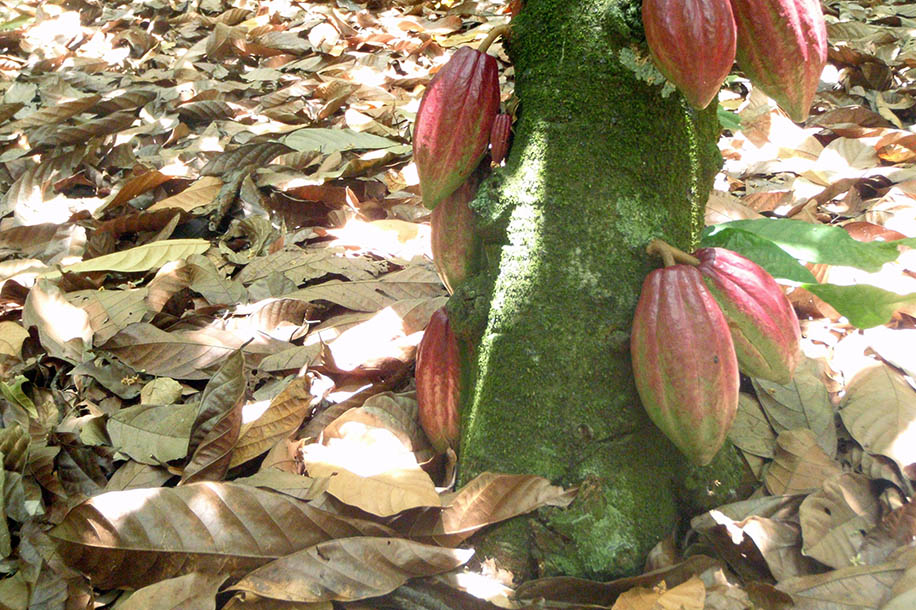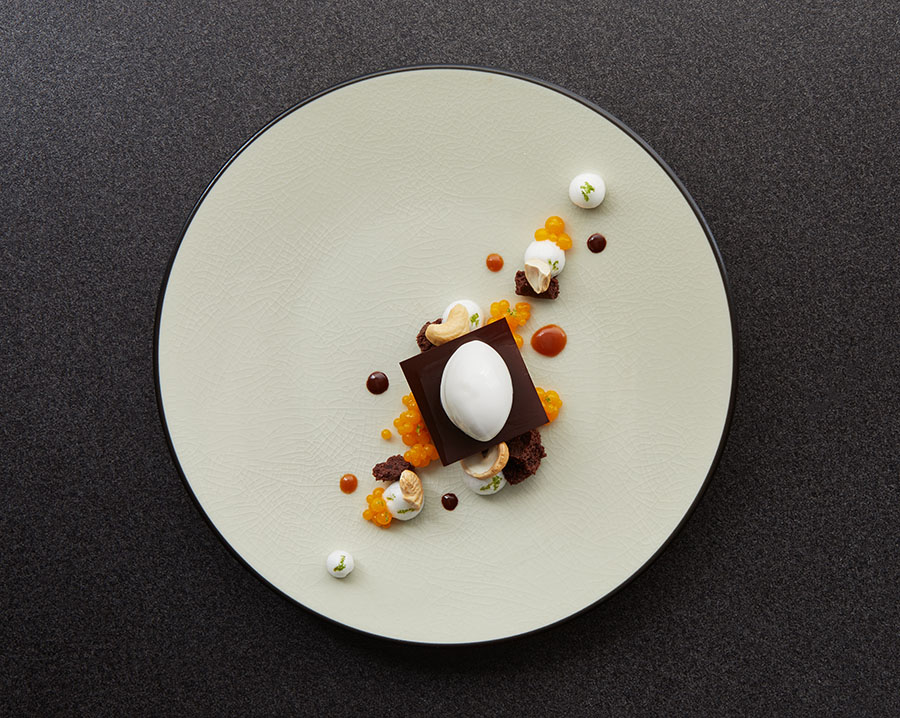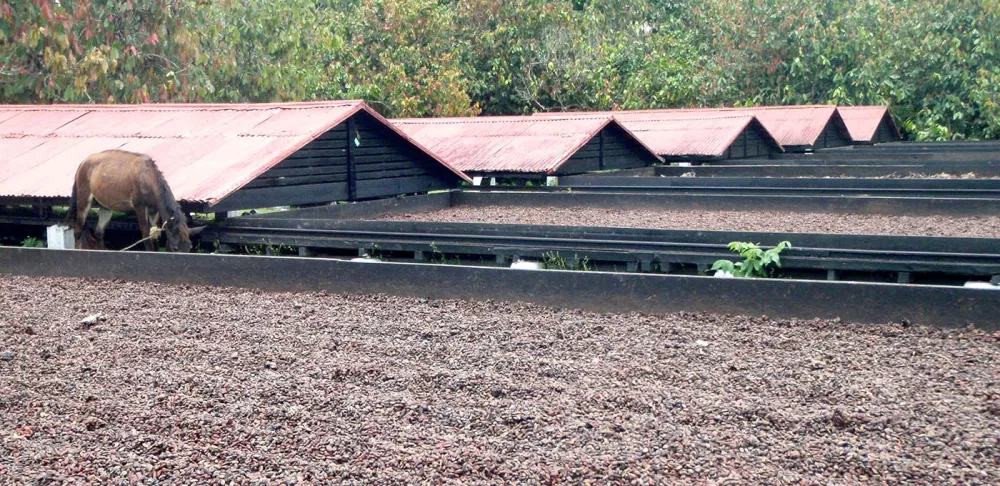Though my career took a sharp left turn toward bean-to-bar manufacturing when I helped create the Chocolate Lab at the Institute of Culinary Education, chocolate has been a part of my daily life since I began cooking more than 20 years ago. For much of that time, however, chocolate was this ubiquitous ingredient that was always on the shelf.
I certainly sought out quality, flavor and functionality in the chocolate I chose to work with, but beyond that, I would have to admit I gave little further thought to where it came from, how it was made or the complex supply chain from the farm to my kitchen. At best, like most pastry chefs, I had a basic textbook knowledge of the process, and often the story began when I opened a fresh bag of chocolate to use in a dessert. I had a blind spot toward understanding and appreciating what it took to get it that far. What did force an important shift of perception was my first visit to cocoa farms in the Dominican Republic.
I jumped at the opportunity to travel to chocolate’s source – specifically a farm that produced the very beans for the chocolate I used every day. This type of farm tour is a bit more common today, but 10 years ago, it was a very rare learning experience. Although I didn’t fully know what to expect once on the ground, I did have a sense that I might bridge what was a significant knowledge gap. The funny thing is, I didn’t know exactly what it was that I didn’t know.
Immediately upon hitting the ground in Santo Domingo, our small group of chefs and chocolatiers boarded a bus and rode two hours deep into the Dominican countryside. Before we even acclimated to the tropical climate – there was our first cocoa tree. Random clusters of brightly colored pods protruded directly from the tree trunks, their reds, yellows and purples standing out among the lush green surrounding them. For three days, every tree we encountered was a photo-opp. The pods begin as tiny white flowers, and the trees were covered with them, too. The real game changer was splitting open a few fresh pods and discovering what was inside: astringent, chalky, purple beans and the odd yet familiar flavor of the sticky pulp that coats them. Suddenly it felt like everything I thought I knew about chocolate was, really, nothing at all.

After seeing the transformation of the cocoa beans from harvesting through to the fermentation and drying processes (which take place long before and thousands of miles away from where most chocolate gets made), I suddenly understood that the true value of the finished product exceeds what we actually pay. The variability of the process and the sheer amount of manual labor behind it forced into me a deeper level of respect, one that I certainly appreciate even more today as a chocolate maker. Another simple but important idea emerged from the visit, during a lunch break in between walking different farms.
As we sat at a table underneath an old mango tree, we sipped fresh young coconut water, and one of our hosts mentioned the many cashew farms in the area. I started thinking about all these flavors, whose source I could practically take in just by turning my head. Chocolate, coconut, mango, cashew – we can easily understand how these ingredients might work well together. But that moment was perhaps the first clear realization that “what grows together” truly “goes together.” The day I returned to the pastry kitchen at Le Bernardin, I instantly began building those flavors into a dish, an homage to terroir – a sense of place – and to chocolate.
One can enjoy this dessert on its face without knowing its origin, but as its creator, I designed the dish to symbolize respect for our ingredients, unexpected inspiration and the never-ending pursuit of knowledge.

Origin
Chocolate Cremeux, Coconut Sorbet, Mango Pearls, Lime “Meringue,” Cashew, Cocoa Sablée
Yields approx. 12 servings
Chocolate Cremeux

Ingredients
- 250 g dark chocolate couverture (72% coco solids)
- 350 g heavy cream (36% fat)
- 50 g invert sugar
- 1 g salt
- 100 g water
- 1.8 g agar
- 2 sheets gelatin, hydrated
Directions
- Place chocolate in a mixing bowl and reserve. Combine the cream with the invert sugar and salt; bring to a boil.
- Meanwhile combine water and agar in a small saucepan and gently bring to a boil, holding at a simmer for one minute.
- Once cream has boiled, remove from heat and gradually incorporate into the chocolate. Follow with the agar mixture. Add the gelatin and transfer to forms. Freeze.
Mango Pearls
Ingredients
- Vegetable oil, chilled, as needed
- 150 g mango purée
- 25 g sucrose
- 1.7 g agar
- 0.3 g locust bean gum
- 100 g water
Directions
- Gently warm the mango purée and sucrose. Reserve.
- Combine agar and locust bean gum, and then disperse into the water. Transfer to a small saucepan.
- Bring this mixture just to a boil, reduce heat and simmer for 2-3 minutes.
- Remove from heat and incorporate into the warm mango base.
- Drop the mixture into cold vegetable oil (5 C/40 F), allowing 5-10 minutes to fully set. Transfer pearls to cool water to rinse and then drain.
Lime “Meringue"
Ingredients
- 85 g sucrose
- 2.5 g Versawhip
- 0.5 g xanthan gum
- 150 g water
- 50 g lime juice
Directions
- Combine the sucrose, Versawhip, and xanthan gum. Disperse into the liquids and blend well with an immersion blender. Allow to hydrate, chilled, for 4 hours.
- Transfer to the bowl of an electric stand mixer and whip to a slightly firm peak.
Cocoa Sablée
Ingredients
- 175 g unsalted butter, softened
- 65 g confectioners sugar
- 2 g salt
- 140 g cake flour
- 20 g cocoa powder
- 2 g baking powder
Directions
- Process the butter, confectioners sugar and salt in a food processor.
- Add the flour and cocoa powder, mixing until thoroughly combined.
- Pipe the mixture into a single layer within a sprayed Silpain form and freeze.
- Bake at 160 C/320 F for 15-20 minutes or until thoroughly baked.
Coconut Sorbet
Ingredients
- 20 g sucrose
- 3 g ice cream stabilizer
- 365 g water
- 150 g sucrose
- 75 g glucose powder
- 500 g coconut purée
Directions
- Combine first measurement of sucrose and stabilizer.
- Heat water to 50 C/120 F. Whisk in stabilizer, whisk in remaining sucrose and glucose and bring just to a boil. Remove from heat, chill and allow syrup to mature for at least 4 hours.
- Combine syrup and purée. Process in batch freezer; extract the mix at -5 C/23 F. Alternatively, transfer to PacoJet canisters and freeze; process as needed.
Assembly
Ingredients
- Cashews, roasted and salted
- Lime zest
- Caramel sauce
- Chocolate sauce
- Chocolate décor
Directions
- Unmold the chocolate cremeux and place on the plate, allowing to temper. Deposit lime meringue and pieces of broken cocoa sablée and cashews.
- Spoon the mango pearls around the cremeux and drop dots of the caramel and chocolate sauces.
- Top the cremeux with a thin square of chocolate décor and finish with coconut sorbet and lime zest.
Take a chocolate class with Chef Michael in ICE's bean-to-bar chocolate lab.




